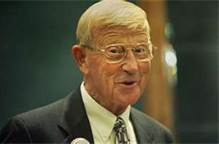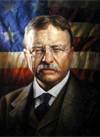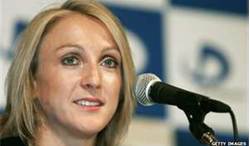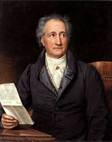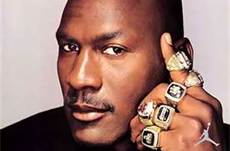
Anyone that follows Philly Pressbox knows that I’m a huge Penn State fan and a huge Joe Paterno fan. You also know that I’ve been a season ticket holder and I coached at the Penn State Football camps from 1994-2002. I had the opportunity to meet Joe Paterno several times and have a signed picture with him hanging on my wall. I also worked with Jerry Sandusky during those years until his retirement, as well as the rest of the coaching staff. I knew Sandusky by name and he knew me by name during that time. With that said, this chain of events saddens me to no end. Obviously, the most important thing in this tragedy is the victims. Anything that is noted in this article is not meant to diminish them and what they have had to endure in any way. Please keep that as the top note.
As I watched the craziness of seeing Paterno fired by what appeared to be a disorganized, panic stricken, Board of Trustees that appeared to be bowing to the media and public pressure to do “something” even if it was wrong, I was filled with disbelief. Seeing Joe Paterno die so quickly amidst all of this without ever seeing the end of it was also saddening. Watching the Sandusky trial and the verdicts I couldn’t help but be sickened and wonder how could this happen. I then listened to the Louis Freeh press conference and the presentation of the Freeh Report and was in disbelief, and again wondered how could this possibly happen. Finally, the word came that the Paterno statue was being removed on a Sunday morning under the cover of darkness and secrecy. With that, I decided I needed to read the Freeh Report for myself and see what exactly was so damning to a man that built Penn State University, and the local community, over 62 years as the football coach, into one of the finest institutions in America that is filled with over 500,000 living alumni, pride and key slogans. (Success with Honor, We are Penn State).
The purpose of my reading the Freeh Report was to look strictly at the actions, or inactions, of Joe Paterno to try to determine for myself where I feel he stands in this tragedy. My finding is that there are many things in this report that a purely speculative and made from assumptions. There is some very good information here that can, and apparently will, be used by the university to improve awareness of signs of child abuse and provide training for all employees regarding the Clery Act among many other things as well as implement a system that guarantees communication at the highest levels to the Board of Trustees among many other things. However, as I will point out below, how can a report be “the gospel” by the university and the NCAA when none of the “key” players were interviewed for the report? They include Joe Paterno, Graham Spanier, Tim Curley, Gary Schultz, Mike McQueary, Jerry Sandusky, Wendell Courtney, and Thomas Harmon. Richard “Dick” Anderson is the only assistant coach mentioned in the report and that is in relation to his Grand Jury testimony representing Sandusky, although it is stated that they talked to many people “including coaches”. So who are Wendell Courtney and Thomas Harmon, you ask? Courtney served as Penn State’s Outside Legal Counsel from 1980-2010 and was a partner at a law firm that performed legal services for the University for nearly 50 years. Courtney also served as legal counsel for the Second Mile and sat on its Board from 2008-2011. (page 107). Harmon is currently the Penn State Director of Public Safety. He held the position of University Department Police Chief in 1998. It’s very interesting that they wouldn’t be included in the report as they were key pieces to this story. Also, have you ever heard of the following people; Alycia Chambers, Ron Schreffler, Chambers colleagues, John Miller, Jerry Lauro, Karen Arnold, John Seasock as well as several State College Police Officers? Each was involved in the in-depth 1998 Sandusky investigation in which no charges were filed because, as it states on page 50, “there was no criminal behavior established (and) that the matter was closed as an investigation.”
Alycia Chambers – a licensed State College psychologist. She was the first person notified by Victim 6’s mother. Page 42.
Ron Schreffler – University Police Department Detective that conducted the initial interviews with Victim 6. Page 42.
Chambers Colleagues – undetermined number of people that Chambers consulted with to confirm her opinion. Page 42
John Miller – Caseworker with the Centre County Children and Youth Services (“CYS”). Page 43.
Jerry Lauro – Caseworker with the Department of Public Welfare (DPW) in Harrisburg. Page 43.
Karen Arnold – Centre County Prosecutor in the District Attorney’s office. Page 43.
John Seasock – Contract counselor to CYS. Page 43.
State College Police Officers – unnamed officers that hid in Victim 6’s home when Sandusky admitted to poor behavior but no sexual contact with Victim 6. Page 45.
For the purpose of this review lets assume that Chambers had two colleagues and there were two State College Police Officers listening in on the conversation with Victim 6’s mother. That makes 12 trained professionals in this type of behavior that were aware of this situation. Yet, in the end of the investigation no charges were filed.
On to the document. Following is the Table of Contents:
- · Pages I – VII – Title Page and Table of Contents
- · Pages 8- 10 – Scope of Review and Methodology
- · Pages 11-12 – Independence of the Investigation
- · Pages 19-30 – Timeline of Significant Events
- · Pages 31- 38 – Chapter 1: The Pennsylvania State University – Governance and Administration
- · Pages 39-54 – Chapter 2: Response of University Officials to the Allegations of Child Sexual Abuse Against Sandusky – 1998
- · Pages 55-61 – Chapter 3: Sandusky’s Retirement from the University – 1999
- · Pages 62-79 – Chapter 4: Response of University Officials to the Allegations of Child Sexual Abuse Against Sandusky – 2002
- · Pages 80-96 – Chapter 5: Response of University Officials to the Grand Jury Investigation – 2010, 2011
- · Pages 97-102 – Chapter 6: Board of Trustees
- · Pages 103-109 – Chapter 7: Sandusky’s Post Retirement Interactions with the University
- · Pages 110-119 – Chapter 8: Federal and State Child Sexual Abuse Reporting Requirements
- · Pages 120-126 – Chapter 9: The Protection of Children in University Facilities and Programs
- · Pages 127-144 – Chapter 10: Recommendations for University Governance, Administration and the Protection of Children in University Facilities and Programs
- · Pages 145- End – Appendices
On page 11 of the report it states, The Special Investigative Council discovered the most important documents in this investigation – emails among former President Graham B. Spanier, former Senior Vice President-Finance and Business Gary C. Shultz and Athletic Director Timothy M. Curley from 1998 and 2001 – relating to Sandusky’s crimes.” There is no mention of any emails from Paterno.
- · Pages 13-18 – Executive Summary
Page 14 of this chapter, under the section “Findings” is the first mention of Paterno in this report. The report states, “Four of the most powerful people at the Pennsylvania State University – President Graham B. Spanier, former Senior Vice President-Finance and Business Gary C. Shultz and Athletic Director Timothy M. Curley and Head Football Coach Joseph V. Paterno – failed to protect against a child predator harming children for over a decade. These men concealed Sandusky’s activities from the Board of Trustees, the university community and authorities. They exhibited a striking lack of empathy for Sandusky’s victims by failing to inquire as to their safety and well being, especially by not attempting to determine the identity of the child in the Lasch building in 2001. Further they exposed the child to additional harm by alerting Sandusky, who was the only one who knew the child’s identity, of what McQueary saw in the shower on the night of February 9, 2001.”
Our interpretation of the above set the tone from the beginning by opening with this accusatory statement right in the Executive Summary. Yet, as stated in the body of the report to the contrary, the authorities, police, CYS, DPW and the District Attorney’s office at a minimum, were aware of the 1998 allegations, as well as Courtney, the Penn State University Legal Counsel. A full police investigation was done at that time. It was determined by the police, and the district attorney’s office, that no charges would be filed due to lack of sufficient evidence. This is discussed in great detail in the report between pages 43 and 51 as well as what roll each person played in the investigation. It should be noted that Seasock states on pages 44and 45 to Schreffler, “he identified some “gray areas”; he did not find evidence of abuse and had never heard of a 52-year-old-man “becoming a pedophile.” He also stated Sandusky “didn’t fit the profile of a pedophile” and that he couldn’t find any indication of child abuse.”
It is our interpretation that this is far bigger and deeper than the authority of the head football coach.
The report does indicate on Page 48 that Curley requested an update on the situation that “Coach” wanted to know, under the subject line Joe Paterno. Curley requested several other updates and referred to coach. Page 49 states “the reference to coach is believed to be Paterno.” Again, speculation on the part of the Freeh Report. it possible in the follow up emails that “coach” wasn’t Paterno? Is it possible that Paterno wanted to know the status so that he could fire Sandusky on the spot once the charges were filed?
It is at this point that the report indicates that Paterno, and the rest of the PSU administration, should have parted ways with Sandusky. Apparently the NCAA agrees. It is very easy to say that today, when you know the outcome of this tragedy, however, what basis would the university or Paterno have had for terminating a 29 year employee. The lack of “credible evidence” would’ve likely gotten the university sued.
Page 15 & 16 state, “Spanier, Schulttz, Paterno and Curley gave the following reasons for taking no action to identify the February 9, 2001child victim and for not reporting Sandusky to the authorities.”
Bullet 2 – Paterno told a reporter, “I didn’t know exactly how to handle it and was afraid to do something that might jeopardize what the university procedure was. So I backed away and turned it over to some other people, people I thought would have a little more expertise than I did. It didn’t work out that way.”
Following the bullets on page 16 it states, “taking in to account the available witness statements and evidence the Special Investigative Council finds that it is more reasonable to conclude that, in order to avoid the consequences of bad publicity, the most powerful leaders in the university – Spanier, Schultz, Paterno and Curley – repeatedly concealed facts relating to Sandusky’s child abuse from the authorities, the University’s Board of Trustees, the Penn State Community and the public at large.”
Our interpretation – How does the newspaper quote have anything to do with identifying the child? Paterno is a football coach. It is stated several times that he “knew everything.” However, it would be hard to expect him to know how to handle such a situation, as well as “know everything.” The proper thing to do, in any company, is to report any type of major incident up the chain-of-command to the people who are trained to handle this type of situation. That’s what Paterno did.
Also, the Freeh Reports comment that “taking into account the available witness statements and evidence the Special Investigative Council finds that it is more reasonable to conclude “this statement indicates that the report has speculated on the findings due to not having interviewed any of the persons directly involved.
Obviously the Executive Summary at the beginning of the report sets the tone and Louis Freeh continues throughout to attempt to justify his “speculations” by bringing up the same points several times. He stated on pages 14, 68, and 76 that the men had failed to inquire as to the safety and well being, especially by not attempting to determine the identity of the child in the Lasch building in 2001.
Pages 19-31 of the report identify some significant events in the Sandusky timeline. A summary of those events follows:
- · May 3, 1998 – Sandusky assaults Victim 6 in the Lasch Building shower.
- · May 4-30, 1998 – Five bullet points are made of the activities during that period. Paterno is not mentioned.
- · June 1998 – Five additional bullet points are made regarding the investigation and Paterno is not mentioned.
- · January 1999 – Sandusky requests to coach one more seasons to earn his 30 years of service.
- · May – August 1999 – Paterno agrees to allow Sandusky to coach “as long as I’m the coach”. Sandusky is also granted “emeritus” status by Spanier after receiving the request from Schultz. This status provides several privileges including access to University Recreational Facilities.
- · December 1999 – Sandusky brings Victim 4 to the 1999 Alamo Bowl and assaults him in the hotel room. Our note, this is Sandusky’s last game as a coach.
- · November 2000 – Sandusky assaults Victim 8 in the Lasch Building shower. Janitors observe assault by Sandusky in the shower but do not report it for fear “they will get rid of all of us.”
- · February 9, 2001 – McQueary observes Sandusky assaulting Victim 2 in the shower of the Lasch Building.
- · February 10-12, 2001 – McQueary reports the incident to Paterno who reports it to Schultz and Curley. Schultz reports to University outside counsel Courtney. A “heads up” meeting is held with Spanier. They agree that Curley will meet with Paterno.
- · February 25-26, 2001 – Spanier, Schultz and Curley meet to develop a plan.
- · February 27 & 28, 2001 – Curley indicated he has changed his mind about the plan “after giving it more thought and talking it over with Joe yesterday.”
- · February 27 & 28, 2001 – Spanier and Schultz accept Curley’s revised plan.
- · March 5, 2001 – Curley meets with Sandusky to tell him the plan. He also tells him he will be notifying the Second Mile.
- · March 19, 2001 – Curley meets with the executive director of the Second Mile and shared the information they had with him. The Second Mile leadership concludes the matter is a “non-incident” and takes no further action.
- · July 24, 2001 – Schultz leads a transaction to sell a parcel of University property to The Second Mile for $168,500.
- · August 2001 – Sandusky assaults Victim 5 in the Lasch Building.
- · Our note – Sandusky is retired and working as the “face” of the Second Mile. He is performing many functions including performing youth summer camps at various University facilities.
- · No further activities until January 7, 2010 when the University received subpoenas from the Pennsylvania Attorney General.
During this lengthy timeline Sandusky requested and was granted a retirement package after being told by Paterno in a letter dated May 28, 1999 that he would not be the next Penn State head coach. (page 57 and 58) As a result of this action, Sandusky submitted a list of “retirement requests” that included annual annuities for 5 years, an on-going relationship between the Second Mile and Penn State, as well as continuing “visibility” at Penn State. Sandusky also wanted “active involvement in developing an outreach program featuring Penn State Athletes and sought “ways for {him} to continue to work with young people through Penn State. It is at this time that Paterno offers Sandusky the opportunity to continue to coach.
On June 13, 1999, Curley emailed Shultz and Spanier and stated that he “touched base with Joe and we are in agreement that we should not do anything more for Jerry.” (page 58).
On June 17, 1999, Wendell Courtney, the University’s then outside legal counsel, provided Curley with a draft “retirement perquisite agreement for Sandusky. Included were the items Sandusky asked for.
On June 21, 1999 a revision was added requesting free use for life of “University weight rooms and fitness facilities available to faculty and staff.”
On June 22, 1999, Sandusky and Curley agreed to revise the permitted use to include “a locker, weight rooms, fitness facilities and training room in the East area locker room complex.” (page 59).
Our interpretation, it appears that Paterno was in agreement of some sort of package for Sandusky up to June 13, 1999 when he stated “we should not do anything more.” After June 13 several modifications were made to the agreement that were defining access to the facilities. Paterno is not mentioned in the report any time after the June 13 note.
Moving forward to Fall 2000. A University janitor witnesses Sandusky assaulting a young boy in the Lasch Building showers. He reports it to another janitor as well as a senior janitor at the time of the incident. They choose not to report the incident to anyone. Janitor “B” reported that the incident “would have been like going against the President of the United States in my eyes.” “I know Paterno has so much power, if he wanted to get rid of someone, I would have been gone.” He explained “football runs this University,” and said “the University would have closed ranks to protect the football program at all costs.” (page 65).
Our interpretation, the last quote doesn’t sound like a quote from a janitor but either way, three adult males chose not to report this incident to anyone in authority. Anything that Paterno “would’ve done” is speculation. In the case of Paterno he can’t be held accountable for this incident when it wasn’t reported and he knew nothing about it.
The timeline moves to February 9, 2001 when the McQueary incident is observed. As is well documented, McQueary reported the incident to Paterno on February 10, 2001. Paterno met with Curley and Schultz on February 11, 2001 and reported what McQueary told him. On February 11, 2001, Schultz reached out to legal counsel, Wendell Courtney, to discuss the “reporting of suspected child abuse.” On February 12, 2001, Curly and Shultz met with Spanier to give him a “heads up.” (pages 67 and 68). The report indicates that McQueary, Paterno, Curley and Schultz are in agreement with what was said from person to person in their meetings, although indications are that McQueary’s first report to Paterno was not graphic in nature. There were many meetings in the next few weeks involving Curley, Schultz and Spanier as plans were being developed on how to address the issues with Sandusky. In an email from Curley dated February 27, 2001 to Schultz and Spanier, Curley states “I had scheduled a meeting with you this afternoon about the subject we discussed on Sunday. After giving it more thought and talking it over with Joe yesterday – I am uncomfortable with what we agreed were the next steps.” (page 74). There are more details of the plan documented in the report. Later on February 27, 2001Spanier agrees to move forward with Curley’s revised plan. The following day, Schultz agrees with Curley and Spanier.
It is at this point in the report, page 75, that Freeh inserts the comments that a Senior Penn State official referred to Curley as Paterno’s “errand boy.” Athletic Department staff said Paterno’s words carried a lot of weight with Curley, who would run big decisions by Paterno.
Curley meets with Sandusky and tells him “about the information that we received, that we were uncomfortable with the information and that I was going to take the information and report it to the executive director of the Second Mile and that I did not want him in the future to be in the athletic facilities with any young people.” (page 76).
As a follow up to the Curley – Sandusky meeting, Curley did meet with the Second Mile executive director who later advised two Second Mile Trustees of the meeting. They concluded the matter was a “non-incident for the Second Mile and there was no need to do anything further.” The executive director did meet with Sandusky on Curley’s concerns regarding bringing kids on campus, and Sandusky responded that it only applied to the locker rooms. The executive director urged him to get the issue clarified. (page 78).
Our interpretation is that when McQueary reported the incident to Paterno he reported it up the line to his supervisors who are far more prepared to handle this type of situation than a football coach. It appears to us that Freeh added the comments about the Curley/Paterno relationship to lead the reader to believe that Curley went to Paterno and Paterno changed the plan. I have run things by my father my whole life, and he’s given me things to think about that at times have caused me to change my mind, but he’s never made a decision for me in my adult life. We don’t see Curley running things by Paterno as being unusual. It’s clear that Paterno was Curleys mentor, we find nothing wrong with that. We also find it interesting that the name of Wendell Courtney keeps popping up. Finally, does the Second Mile have any responsibility in this tragedy? Three more adults know that there’s been a situation and have no interest in stopping it.
Finally, Sandusky’s continued access to the University and football facilities is discussed at great length. (pages 104-106). The Freeh Report states, “Spanier, Schultz, Paterno and Curley were aware of the allegations against Sandusky in 1998 and 2001. Nonetheless, they put children in danger by permitting Sandusky to participate in these activities and by providing continued support of Second Mile activities.” (page 104). There is a great deal written about Sandusky’s continued access to the Lasch Building, the East Area Locker Room Building, offices, the Nittany Lion Club at Beaver Stadium, his Football Camps and his continued business dealings with the University after his retirement. (pages 105 and 106). It is at this point that Freeh states again that, “Despite Spanier’s, Schultz’s, Paterno’s and Curley’s knowledge of criminal investigations of Sandusky regarding child abuse as early as 1998, they failed to control Sandusky’s access to the University’s facilities and campuses.” These pages of the report do not mention Paternos name anywhere, nor do they mention Spanier or Schultz. The only name mentioned is Curley reversing his decision to remove Sandusky from the football season ticket list in 2011. Sandusky was still considered a significant representative of the University in his retirement, however, there’s no indication of who approved this.
Regarding Sanduskys continued access to the facilities, when asked in 2011by some members of the Athletic Department staff if Sandusky could be restricted from the athletic facilities, Penn State General Counsel Cynthia Baldwin told them that the University could not take the keys. Baldwin advised “that because of Sandusky’s emeritus status and the fact that he had not been charged with a crime, his access could not be eliminated without the University being sued.” (page 106 and 107). As a follow up the report states that Sandusky was asked to return his keys, however, the locks were changed and it is not known if the keys were ever returned.
Our interpretation; if the university legal counsel stated that the key could not be taken away from Sandusky based on his status why does the report call out Paterno and the others for allowing him access? Also, at no point in the timeline between March 2001and 2010 are there any entries regarding any communication between Paterno and Sandusky, or anyone else for that matter. There is a 9 year gap in the report. There’s no way to tell, based on the report, if Sandusky used the facilities every day while everyone was at work, or if he used them after normal work hours, on weekends or when the team was on the road. The report indicates that Sandusky had a free pass to go nearly anywhere he wanted but it doesn’t indicate that he did. It is noted that he had an office that he gave up in between 2007 and 2008 due to overcrowding.
There are several other areas discussed in the report that relate to the Clery Act and the lack of training in this area from the administration to the football staff, as well as an extensive list of recommendations to improve the University moving forward. It is noted that Paterno, Curley and McQueary were obligated by law to report this incident to the University Police Department for inclusion in Clery Act statistics and for determining whether a timely warning should be issued to the University community. (page 118). It is also noted that Paterno, Curley and McQueary did report the incident to Schultz who, as SVP-FB, was ultimately in charge of the University Police Department. However, Schultz was not a law enforcement officer and was not the person designated to receive Clery Crime reports. Arguably, as the senior leaders of the University, Schultz and Spanier should have ensured compliance with the Clery Act regarding the incident. (page 118).
Our interpretation: the failure of any of the individuals to report per the Clery Act appears to be a lack of training on the part of the University to its employees. You can’t report on something you don’t know about.
The final timeline:
November 9, 2011 – Joe Paterno was fired as head football coach at Penn State University after 62 years of service.
January 22, 2012 – Joe Paterno died at the age of 86.
July 22, 2012 – the famous Paterno statue was removed from outside Beaver Stadium based on the findings and presentation of the Freeh Report.
July 23, 2012 – 112 Penn State football victories, 111 credited to Paterno were removed from the record books by the NCAA and Penn State was given the harshest penalties ever by the NCAA based on the finding of the Freeh Report.
Our Conclusions:
- · The Freeh Report is highly speculative in nature.
- · The Freeh Report adds comments and emphasis as it sees fit. Examples, the Curley comment in regards to being Paternos “errand boy” and the continued inference that Paterno, Spanier, Schultz and Curley left Victim 2 in danger by not attempting to find out his identity.
- · The Freeh Report leads the reader down a path to believe the story based on speculation like a mystery novel.
- · As a result of the 1998 legal investigation, in which no criminal charges were filed, Joe Paterno, or anyone else in the Penn State administration, can’t be held accountable for any inaction based on the results of the police investigation.
- · It appears that Sandusky’s retirement was not a result of the 1998 incident.
- · It appears that others, besides Paterno, modified the Sandusky retirement plan to include additional facilities.
- · It seems clear that Paterno, nor anyone else but the janitors, can be held accountable for what the janitors witnessed that they chose not to report.
- · It appears that a decision was made to not publicly report the 2001McQueary incident to outside authorities other than the Second Mile. This decision was ultimately approved by Spanier and agreed to by Schultz but the reason is speculated in the report that it was to not bring bad publicity to the University, which is highly speculative. The truth will come out when Schultz and Curley speak under oath.
- · Penn State University provided a “knee jerk” reaction based on what they interpreted as media and public outcry. As a result, the University did not see or hear the Freeh Report before it was put out publicly in the Louis Freeh press conference. This created a media and public frenzy that led to the demise of the Paterno legacy.
- · Once the report was public, the University again responded irrationally in regards to the Paterno statue. This decision again appears to be a “knee jerk” reaction based on media and public outcry.
- · The NCAA took the opportunity to “pile on” Paterno and Penn State because the University chose not to defend itself even after the report was made public. This decision brings an end to the Paterno legacy.
- · Based on the press conference alone, anyone not having actually read the report is led to believe that the findings are clear in regard to Paterno’s guilt in not reporting child abuse when he had absolute knowledge that it was taking place, that he allowed it to continue by providing access to University facilities and that he, as Head Football Coach, after properly reporting the abuse as was told to him by McQueary, should be held accountable for not having personally continued to pursued charges rather than leave those duties to those better qualified in that area. This has led to the demise of the Paterno legacy.
Feel free to click the COMMENT/RESPONSE button below and leave your thoughts as well as click the FOLLOW button on the bottom right of this page, input your email address, and receive your Philly Pressbox posts directly in your email.
We would like to thank our sponsor for their support. Click the following link to check out all of their Spring health items. http://www.shop.com/ul!60874!spring+health!www.shop.com%2Fbobsullivan-trends.xhtml?credituser=C9407795 Lastly, click on the business card below to see all of their items.




